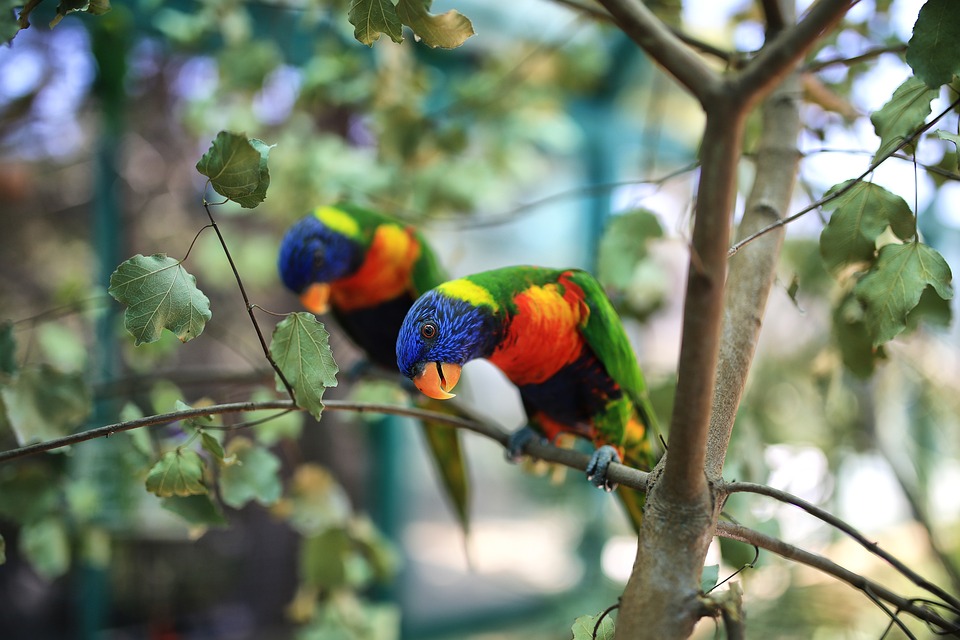Parrots are fascinating creatures with the ability to mimic human speech and a wide range of sounds. If you’ve ever wondered how to train your parrot to talk on cue, this comprehensive guide will provide you with effective techniques and tips to unlock the art of vocalization on command.
Before diving into the training process, it’s essential to understand the basics of parrot vocalization. Parrots are highly social animals that use vocalization to communicate with each other and their human companions. While their ability to mimic sounds and speech varies between species and individuals, they possess a remarkable talent for vocalization.
To ensure successful training sessions, it’s crucial to create the right environment. Choose a quiet and distraction-free space where you and your parrot can focus without interruptions. Maintain a calm atmosphere and ensure that your parrot is comfortable and receptive to training.
The step-by-step guide to teaching your parrot to talk on cue begins with bonding with your parrot. Building a strong bond is the foundation for successful training. Spend quality time with your parrot, engaging in activities it enjoys, such as playing, feeding, or gentle petting. This helps create a positive association and trust between you and your parrot.
Gradually introduce your parrot to the training process by using positive reinforcement techniques. Offer treats or praise whenever your parrot vocalizes, even if it’s just mimicking simple sounds. This encourages your parrot to associate vocalization with rewards and builds trust.
Next, select appropriate phrases or words that you want your parrot to learn. Start with short phrases or single words that are easy for your parrot to mimic. Consistency in the chosen vocabulary is vital to facilitate faster learning.
Consistency and repetition are key when training your parrot to talk on cue. Regularly repeat the chosen phrases or words, using them in context whenever possible. Reinforce positive behavior with treats or praise to motivate your parrot to continue vocalizing.
Reward-based training is crucial in teaching your parrot to talk on cue. Each time your parrot vocalizes on command or mimics the desired word, reward it with treats or praise. This positive reinforcement encourages your parrot to associate vocalization with rewards, reinforcing the desired behavior.
Remember that learning to vocalize on command is a gradual process that requires patience. Avoid rushing your parrot and gradually increase the complexity of the phrases or words. Celebrate each milestone achieved and continue with consistent training sessions and positive reinforcement.
Now, let’s address some frequently asked questions about parrot training.
Can all parrot species learn to talk on cue? While most parrot species possess the capability to mimic sounds and speech, individual talents may vary. Some species, such as African Grey Parrots and Amazon Parrots, are known for their exceptional talking abilities. However, with proper training and patience, many parrot species can learn to talk on cue to some extent.
At what age should I start training my parrot to talk? Parrots can begin learning at a young age, even as early as a few months old. However, it’s essential to prioritize bonding and building trust with your parrot before commencing specific training. Understand your parrot’s comfort level and readiness to engage in training activities.
How long does it take for a parrot to learn to talk? The time required for a parrot to learn to talk varies depending on factors such as species, individual personality, and training consistency. Some parrots may start vocalizing within a few weeks, while others may take several months. Patience, persistence, and regular training sessions are key to achieving success.
How can I prevent my parrot from learning undesirable words or phrases? To prevent your parrot from learning undesirable words or phrases, avoid using them during training sessions. Be mindful of your language and surroundings, as parrots are highly perceptive and can pick up words easily. Focus on positive reinforcement and redirect their attention to appropriate vocabulary.
What if my parrot doesn’t show any interest in talking? Not all parrots may show equal interest or aptitude for talking. If your parrot doesn’t exhibit enthusiasm for vocalization, focus on other forms of training and enrichment, such as teaching tricks or engaging in interactive play. Each parrot has its unique capabilities and preferences.
In conclusion, teaching your parrot to talk on cue is an exciting journey that requires patience, consistency, and reward-based training. By following the techniques and tips outlined in this comprehensive guide, you can create a strong bond with your parrot and establish a positive training environment. Happy vocalizing!









